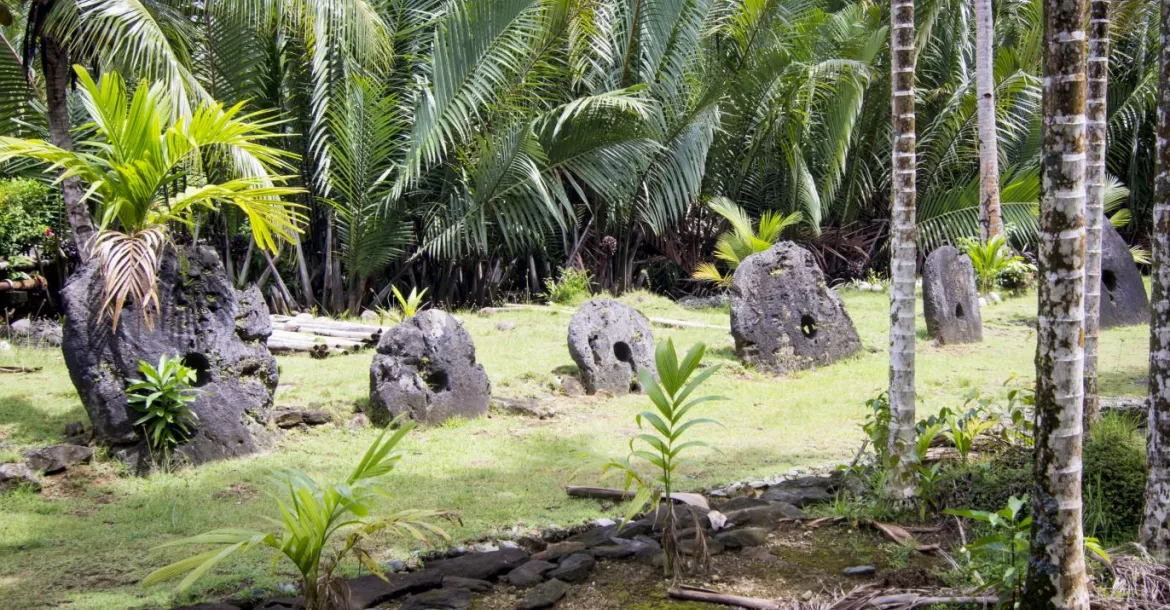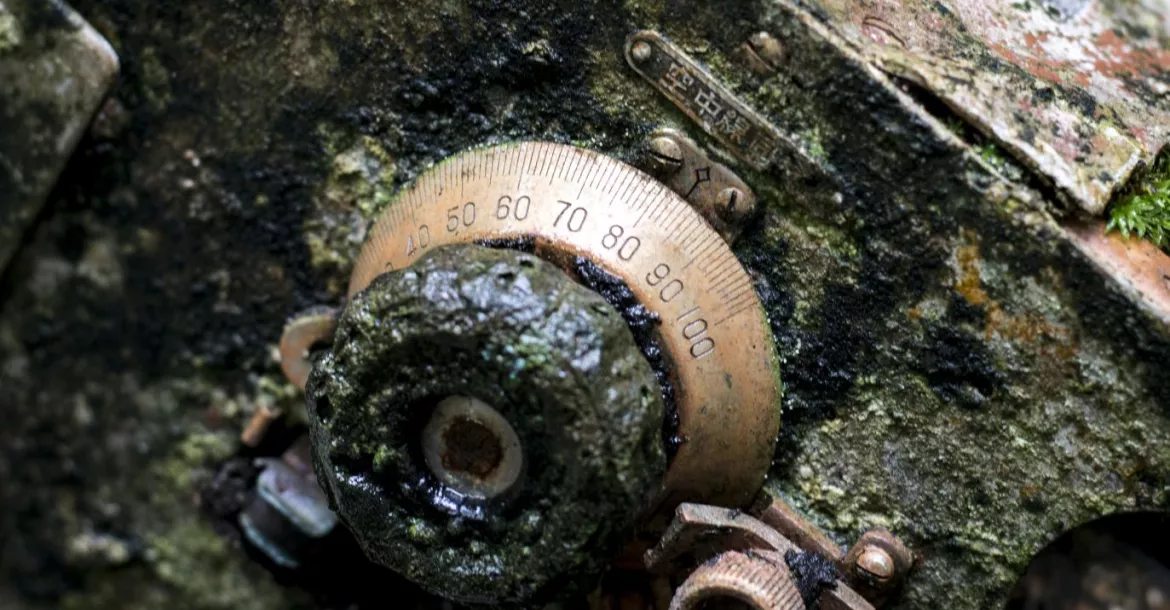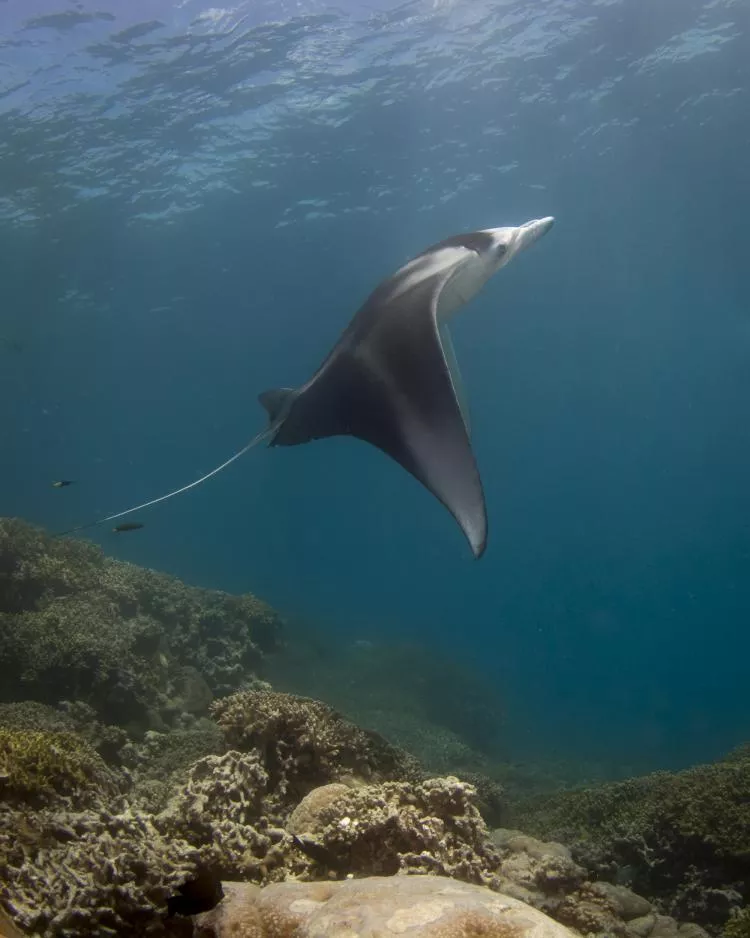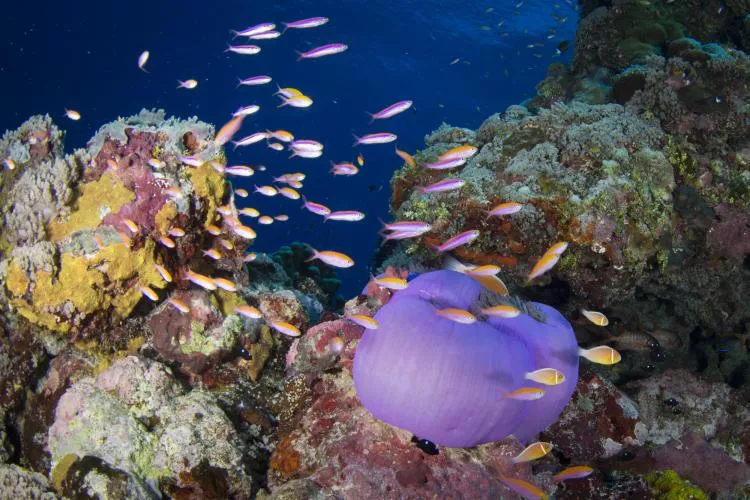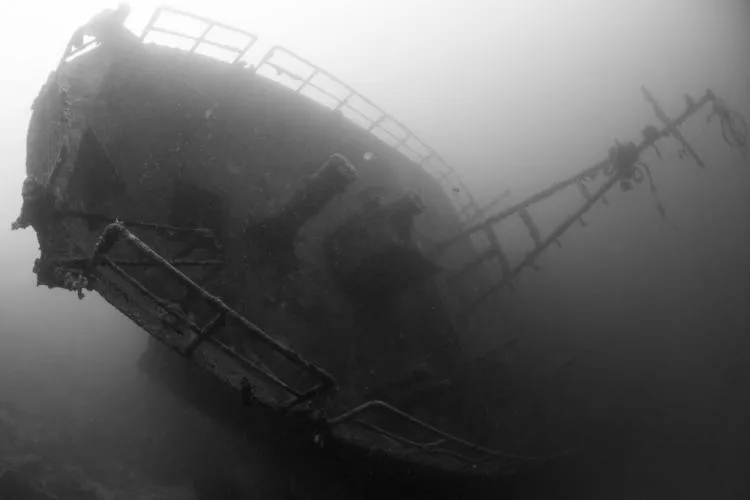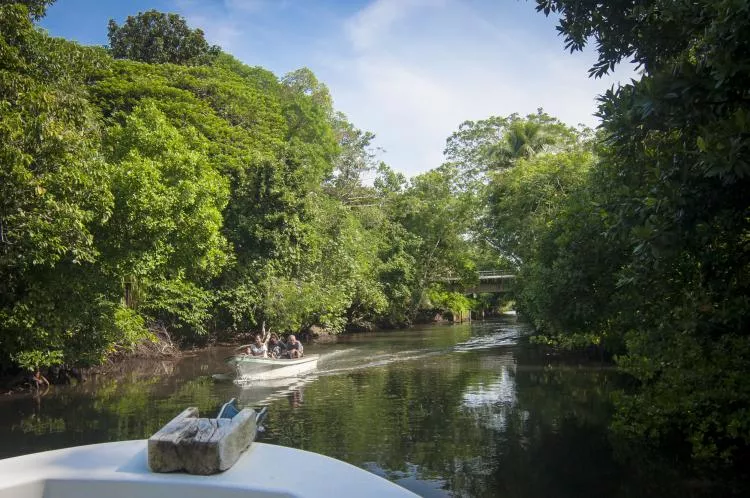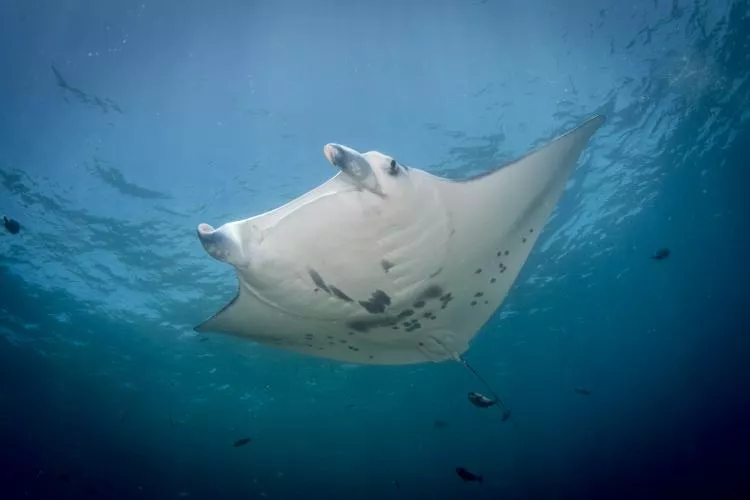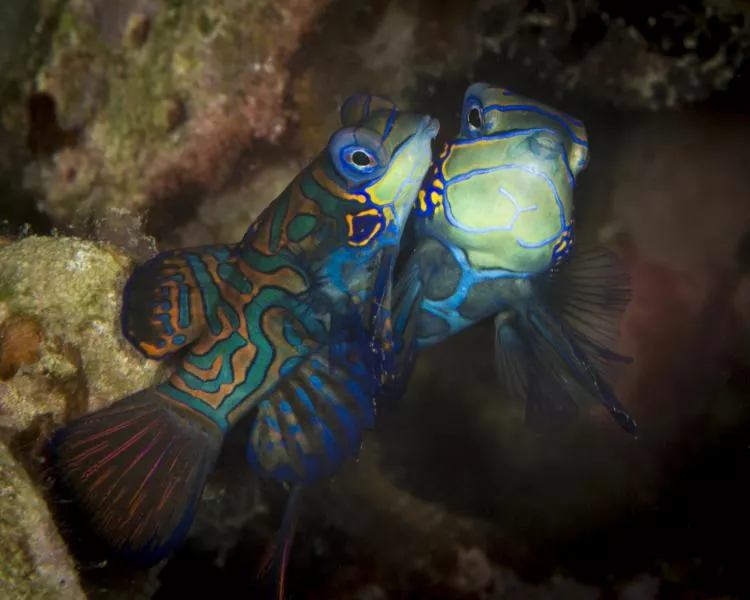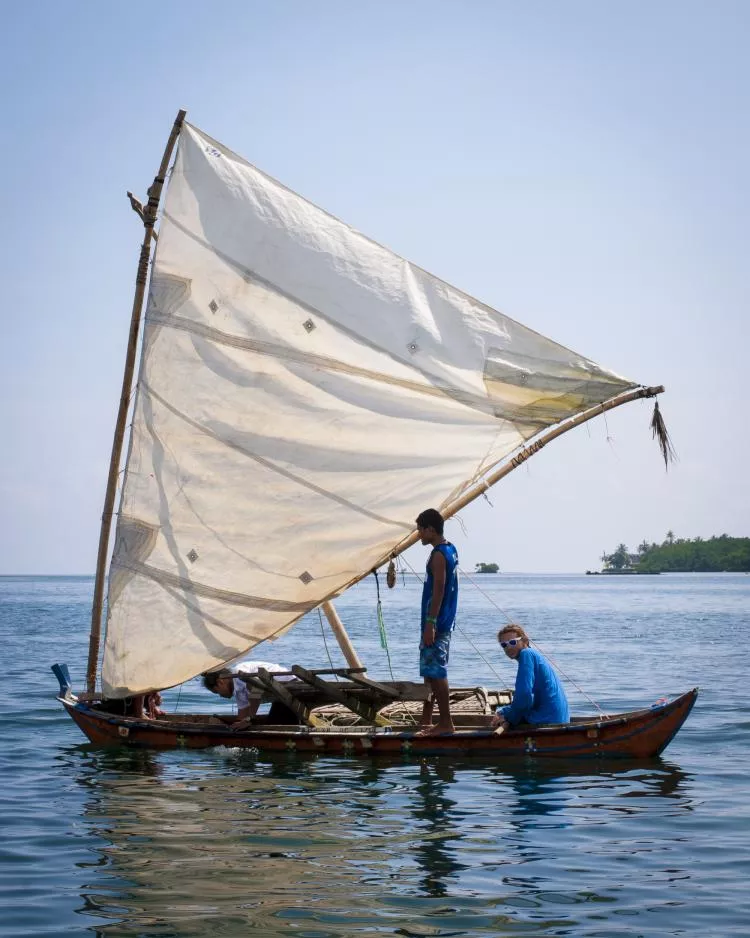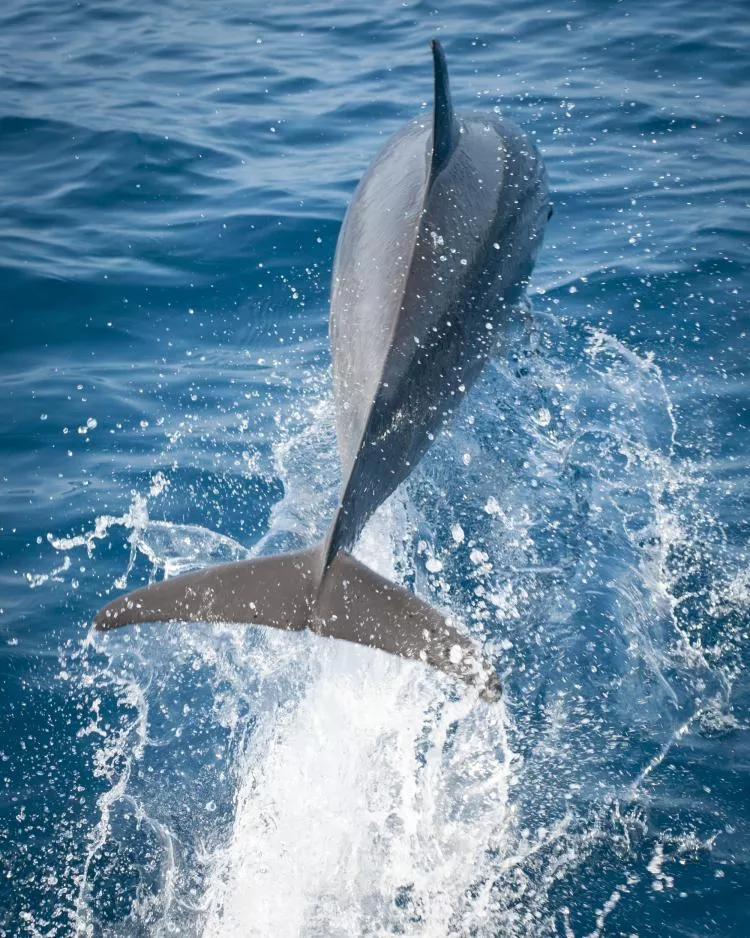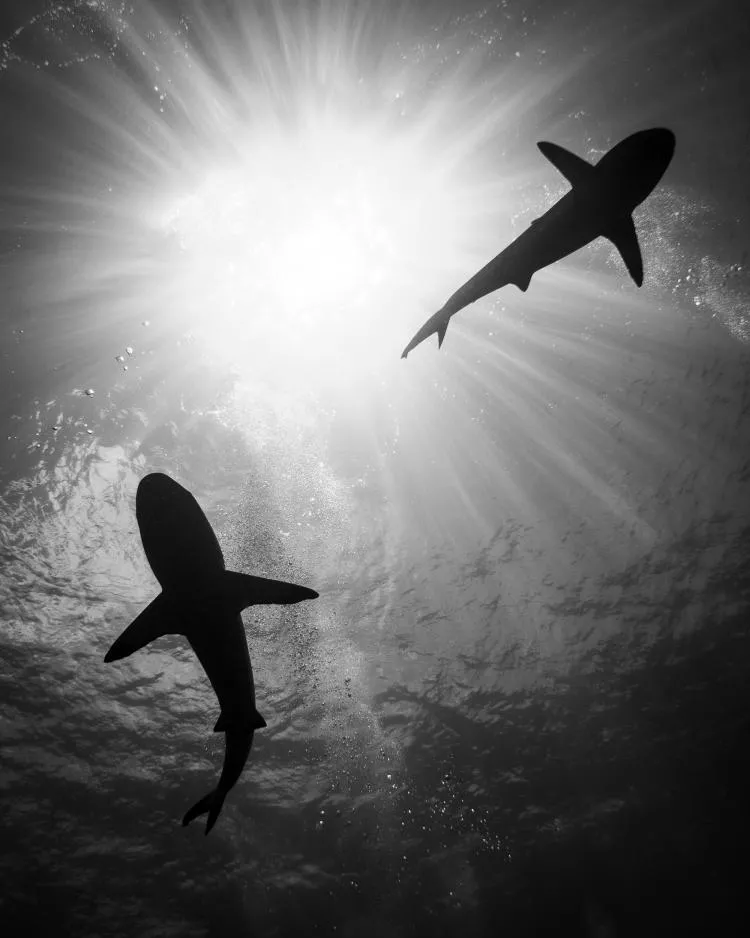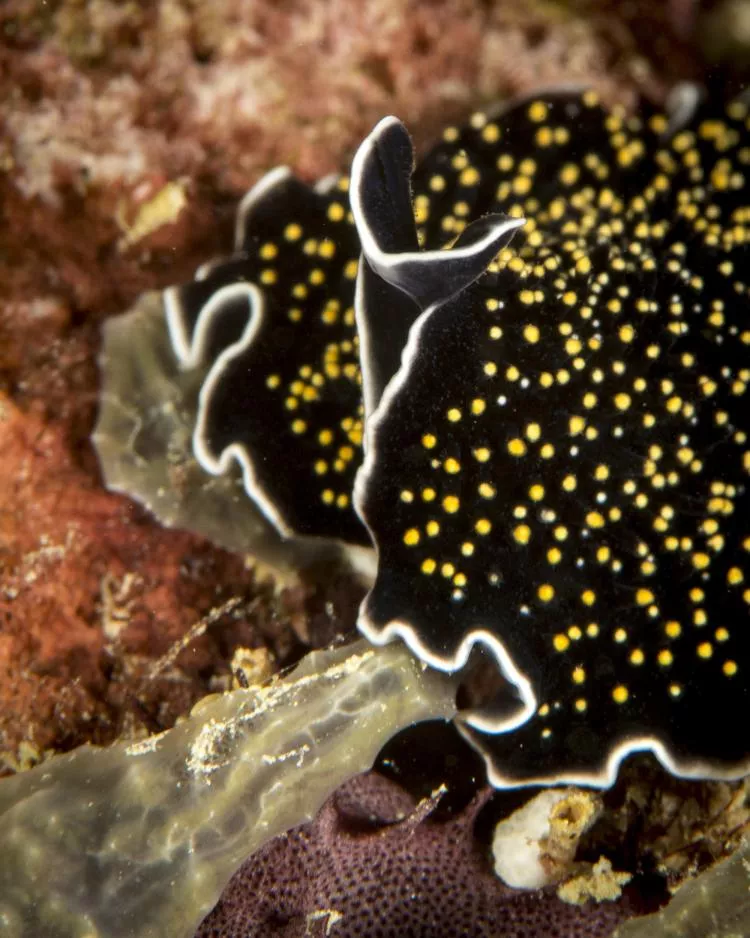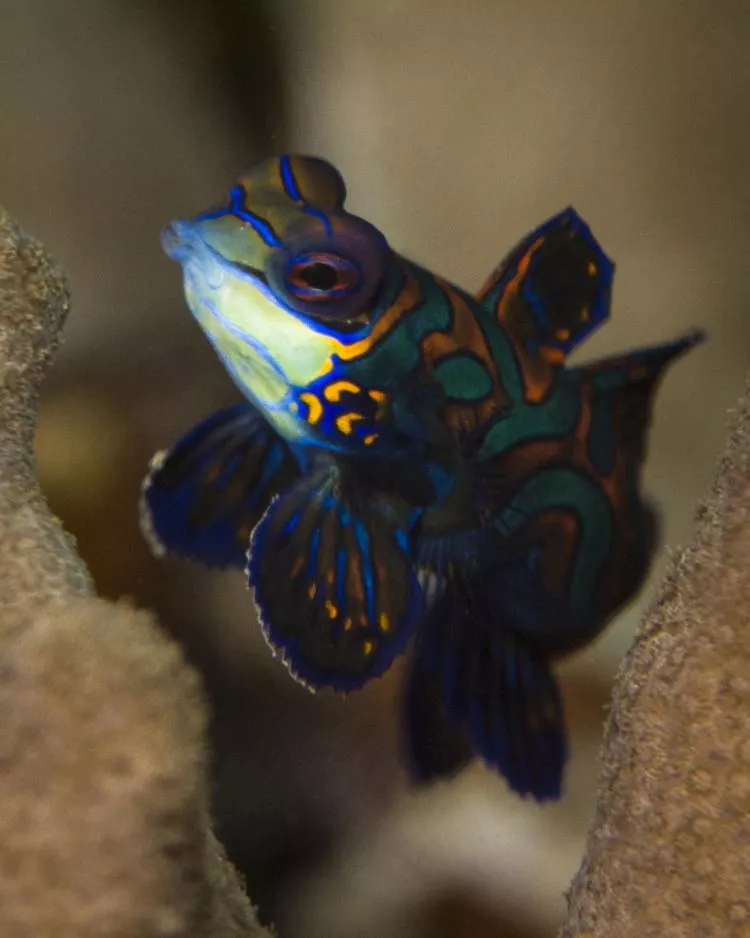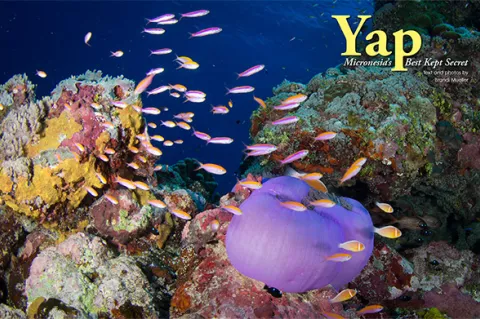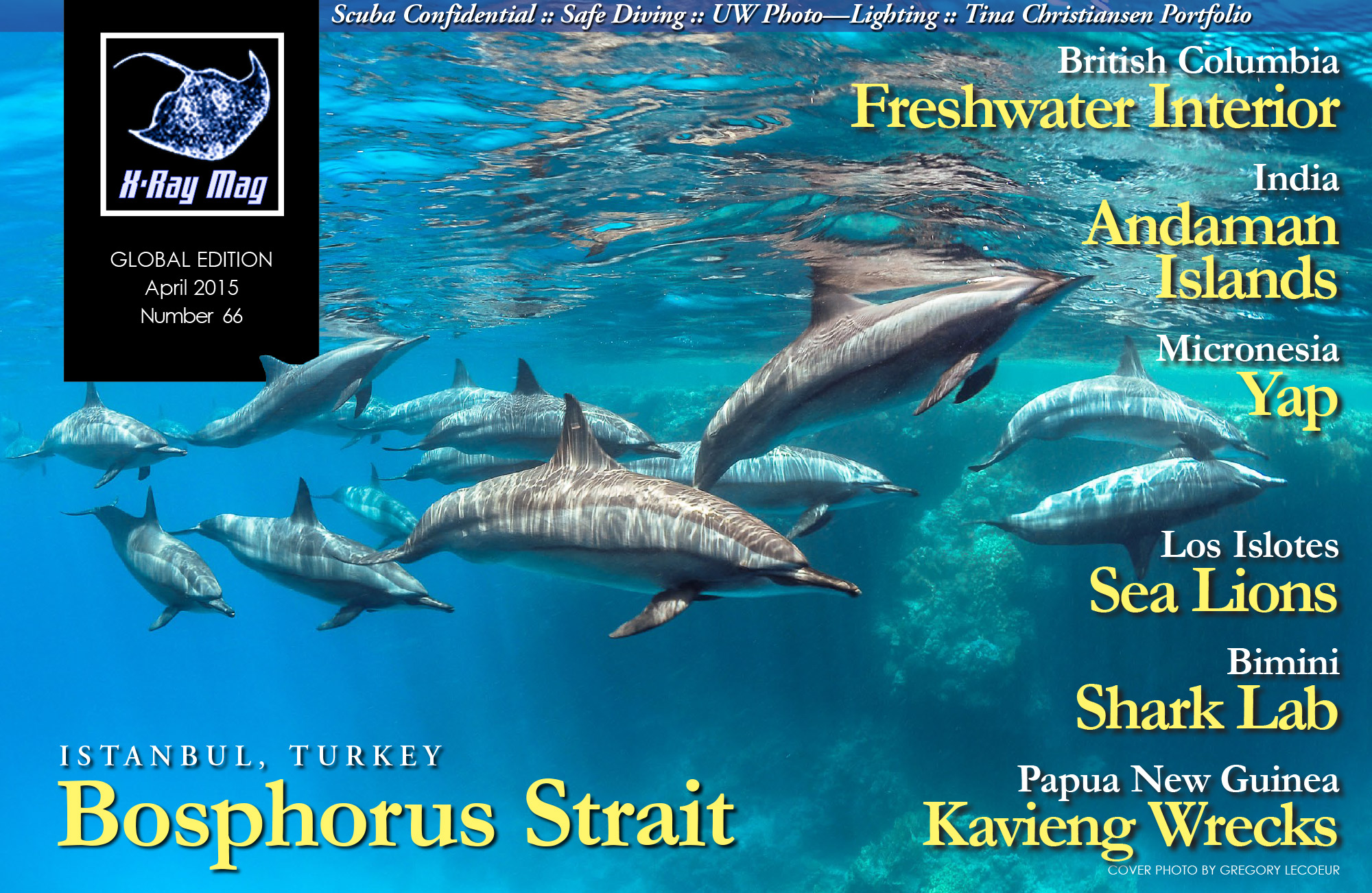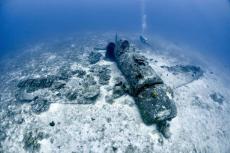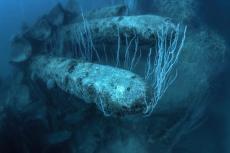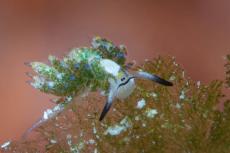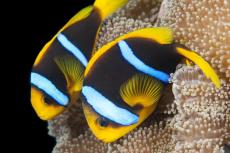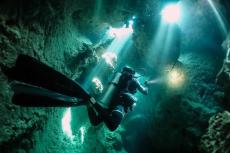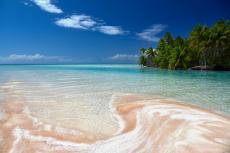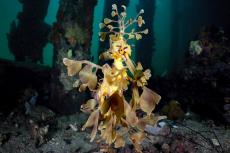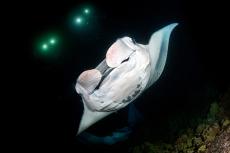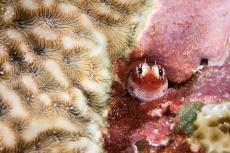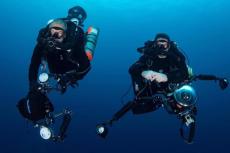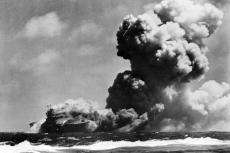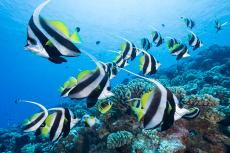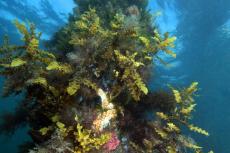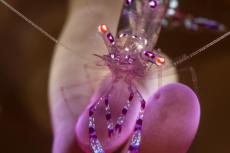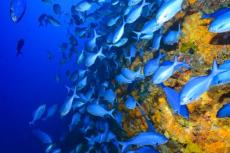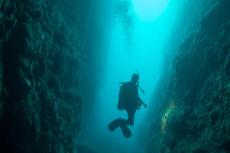Micronesia has so many great islands to dive that it’s hard to pick just one. Often, some of the lesser known islands, such as Yap, get passed over for their more popular neighbors such as Truk (Chuuk) or Palau. I had always heard great things about Yap’s diving though stories of mantas and sharks, so I headed there to find out if it was indeed one of Micronesia’s best kept secrets.
Contributed by
Factfile
Brandi Mueller is a PADI IDC Staff Instructor and boat captain living in the Marshall Islands.
When she’s not teaching scuba or driving boats, she’s most happy traveling and being underwater with a camera.
For more information, visit: www.brandiunderwater.com.
I discovered some truth in that as soon as I arrived. It’s not often you show up at a dive resort and find you are the only person there. My flight had arrived from Guam in the middle of the night and I had only diving on my mind, with the intent of a few hours of sleep and then get up for diving. But immediately, I was introduced to Yap’s own prescription of island time. “Sleep in,” they told me. “We’ll go diving whenever you wake up.”
I found out pretty quickly that it was quite nice to have one’s own resort.
After sleeping in for as long as my dive-giddy body would let me, I wandered down to the restaurant for breakfast. While eating French toast and looking out over Yap’s lagoon, my dive guide came down and asked when I’d like to dive.
We decided that we’d go out to see the famed Yap Manta Dive after lunch, followed by a twilight mandarinfish dive in hopes of seeing them mate. The idea sounded perfect to me and we didn’t even have to ask anyone else.After leisurely getting my gear together, I wandered down to the dive shop and then had a short stroll around Colonia, the main town of Yap.
After lunch, we headed out to the manta dive via Tagreng Channel (formerly German Channel), a man-made channel created to get from Colonia to the ocean faster. Yap has a large barrier reef. All the water inside Yap’s barrier reef is called the lagoon.
The Tagreng Channel was beautiful, sometimes very narrow and shallow through the mangrove forest that was slowly being overgrown by the trees. The channel was best transversed during high tide, otherwise some pushing of the boat would be required. Luckily, it was high tide, so my captain zipped through it like an amusement park ride through a narrow tunnel of green mangroves.
Diving with mantas
Arriving at the dive site, I was briefed on the rules of the manta dive. The mantas had been coming to this site to be cleaned for many years. They would slowly drift over the top of a shallow coral head, allowing wrasses and other fish to eat the parasites off their bodies.
There was to be no touching of the mantas and divers were not allowed on the top of the coral head, but just around the sides of it (The top was only for the mantas). It was best not to swim on top of the coral head anyway, as it would scare the mantas away.
I promised to be still and not swim over the top of the coral head, and so we backrolled into the water for my first dive in Yap. Visibility was a little milky but we hadn’t even gotten to the coral head when a manta swam right past us. I think it was racing to get there before us.
After a short swim, we were at the coral head and my dive guide pointed out a spot for me to stay, with a rocky outcrop to hold onto if needed, in about five meters of water. I wedged myself into place among the rocks (where there was no coral) and waited.
As soon as I was settled in, a manta, as if on command, drifted over the top of the coral head. It paused for the fish to swim up to it; soon, the wrasses began swimming in and out of its mouth, on its underside and around its tail. The manta seemed to relax, as if it was getting a massage, and kept slowly drifting towards me, closer... closer... till suddenly, the manta and all its spa fishes were directly over me.
I ducked, so it wouldn’t hit me, but it seemed to ignore me completely and passed by. Once on the outside of the coral head, the manta appeared to awake from its trance and circled the outside of the coral head, returning to its original location to do it all over again.
This continued until my air was low. Two other mantas had also come to visit the spa several times, but the first one I saw was still there even when I left. My dive guide told me that winter was the best time to visit because the mantas were also mating. Sometimes more than ten mantas showed up at one time, chasing one another and trying to mate as well as being cleaned. This was October and he told me the mantas showed up most days, but usually not for entire dives like this one, so I was lucky to see them for so long, so close.
Mandarinfish at Rainbow Reef
I was in manta heaven and grinning from ear to ear as we headed back through Tagreng Channel to a dive site called Rainbow Reef. Just outside of town, this was the mandarinfish dive. Close to a small island, the dive site was shallow, about 18 meters at the bottom, and it had lots of antler coral where the mandarinfish lived in. We stayed above six meters and my dive guide called me over and pointed into the coral. At first, I didn’t see anything, and then a flash of blue, red and yellow flitted past.Staring harder into the coral, I saw another flash of color. Then, the tiny mandarinfish, about two inches long, slowed down and looked out at me from behind a coral branch.
The mandarinfish was named after the colorful robes ancient Chinese Mandarins would wear. Their tiny bodies are blue and green, with yellow and red wavy patterns. Mandarinfish are also unique because they do not have scales like most fish, but instead have slimy skin with a pungent smell thought to prevent predators from eating them. Their bright coloring was also a warning sign for predators that they did not taste very good.
As the light started to fade, the real show began. My dive guide pointed out a pair of mandarins. A large male was chasing a smaller female. As the light had almost disappeared, I turned on my red focus light to keep them in sight, as the two fish went cheek-to-cheek and swam up out of the coral head.
This was the mating ritual of the mandarins. Each night, they paired up and, for a brief second, rose up out of the coral next to one another to mate, releasing eggs and sperm, which fertilize and fall back onto the reef.
It was dark when we climbed back onto the boat and headed in for dinner. I couldn’t have been happier, having had such an amazing manta encounter AND seen mating mandarin fish, and it was only my first day of diving!
Diverse marine life
Due to rough sea conditions caused by a typhoon that had recently passed nearby, it was too rough to leave the lagoon until the seas calmed. On my second day, we went back to the manta cleaning station for another great dive and then to a sunken fishing boat with plenty of macro action, which included nudibranchs, flatworms and pipefish.
On the first day, the weather allowed us to go out of the lagoon, so we went to the most southern point of the island to a popular dive called Yap Canyons. There was still a bit of a swell and some current but the water was crystal clear and there were fish everywhere. Colorful coral and sponge-encrusted canyon walls granted us entrance into swim-throughs, and there was a massive wall that dropped off into the deep blue abyss.
Turtles and sharks swam past us with ease as we fought to make our way in the current. As we swam along the rocky canyon walls, they seemed almost to sparkle with hundreds of pink and purple anthias moving about.
During the surface interval, we continued around the southern part of the island and the crew fished out a floating coconut. I wasn’t really sure what they were going to do with it. The captain took out a large knife and, holding the coconut in his palm, proceeded to whack it with the back of the knife while moving it through his fingers. The knife made enough of a crack in a perfect circle around the coconut so he was able to stick the knife into the crack and open it, providing us with fresh coconut water to drink. He then cut out strips of the meat to eat from the inside.
It was still quite rough outside of the lagoon, so we headed back to the manta dive site (I just couldn’t get enough of it). The location was also a research site for Manta Trust, a research organization studying mantas worldwide. Each individual manta has a unique pattern on its underside of white and black spots. Divers can send in photos to help ID individuals, and Manta Trust collects the data to do population studies on when and how often each manta shows up at the cleaning station.
The next day, we went back outside the lagoon to Vertigo, a shark feeding site. Conditioned to the sound of the boat, sharks were all around us before we even jumped in. Visibility at Vertigo was perfect. Grey reef sharks, black tips and white tips all crowded around us and the bucket of fish chum.
After watching the sharks for a while, I decided to leave the feeding area and head down the steep wall. Healthy coral and anemones dotted the wall and I found a lone turtle sitting in the coral. On closer inspection, the poor thing had a small bite (from the sharks?) on his shell.
On my last dive, we went back to Rainbow Reef to try and get a few more photos of mandarinfish mating. Learning from my previous dives, I felt the best way to see the mating was to find a female and follow her, no matter what. So, just after descending, I found one and watched her dart around in one coral head for quite a while, eating small crustaceans. A male showed up and chased her into another coral head.
Another male also showed up and the two males had a bit of a face-off, with both competing for which one looked prettier. In turn, each male would puff up his body and stick his long, pointed dorsal fin straight up. While the males fought, the female fled back to her original coral head and then, lost in the distraction of the males, I lost her (as did her suitors).
My dive guide had his eye on another pair and motioned me over. I watched the male follow the female and how she would let him chase her, but slowly, and she seemed to keep looking back to make sure he was keeping up. It was like a mandarinfish soap opera down there!
Just as the light started to completely disappear, the two were getting closer and closer to each other and suddenly they both ascended above the coral head, cheek-to-cheek. I snapped away, hoping to get something. But as soon as it started, they both disappeared back into the coral head.
Topside attractions
On my last day, I toured the island’s cultural points with my dive guide. Yap is known for its use of stone money. Made of limestone, large and small disks with holes in them were used as currency. What makes them even more special is that limestone is not found in Yap. The Yapese would sail 450km (280 miles) to Palau to quarry limestone and make the stone disks.
Once arriving in Yap, the stone money usually wasn’t moved. Ownership may change, but large “banks” were created where the stones would be put on display (and some still are on display). The largest is almost four meters wide and smaller stones can be just a few centimeters.
The worth of the stone is also interesting as it is not solely based on size. It includes how it was carved and the difficulty of how it got to Yap. If a father sailed to Palau and lost his life on the journey in a quest for the stone, the stone was then also worth the father’s life. If the son sailed after his father for the same stone and died, his life too becomes part of the stone’s worth.
My guide also took me around to several WWII airplane wrecks on land, several of which required some short hikes into the jungle. My favorite was one with some sort of Japanese radio wreckage where one could still see the kanji characters on the knobs.
After my tour, I relaxed with a local brew called Manta Gold from the Stone Money Brewery and got ready for my flight home. Contemplating my trip, I was really glad I hadn’t passed over Yap. With mantas, sharks, culture, and so much more, the island of Yap is truly beautiful and I look forward to returning. ■


